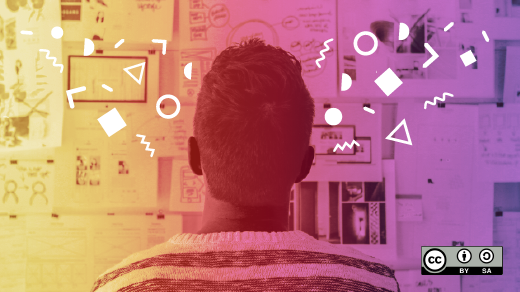Hour of Code is a global movement that aims to demystify code by introducing students and teachers to the basics of programming through direct participation in open source software projects. It currently reaches tens of millions of students in almost 200 countries. Similarly, Kids Can Code teaches children to code, based on the belief that a basic understanding of software engineering provides a set of fundamental skills that is vital to both to the child's future and that of the global economy. Kids That Code offers unique programs in which children learn computer programming, game development, website creation, electronics, and more. Google’s Code-In is an annual programming competition for high school and secondary school students aged 13-17. The program encourages young people to complete tasks specified by various partnering open source organizations. These are just a few examples of the growing numbers of communities working to introduce and foster interest in software development and open source software. Tools such as Alice, Hackety Hack, Scratch, and others provide a platform along with activities and resources for teaching and learning.
But there's a catch: Students can't participate in any of these valuable programs—nor can they use Alice, Hackety Hack, Scratch, or any other software—if they don't have a computer.
For too many under-served students, access to computers is limited to just a few hours during the school day—in select classes, for example, or at the library or a computer lab. This limited access does not affect only students who are exploring interests in computer software or hardware. Students who are interested in graphic design, CAD, or digital media, and those who just want to go online to research homework assignments or collaborate with classmates miss out as well. Once these students leave campus, they lose access to technology and its opportunities. In fact, an hour of code may be all the time these students get—which means we are neglecting entire communities of potential developers, engineers, system administrators, architects, computer scientists, graphic designers, animators, architects, and more. The opportunities made available through technology must be available to all. This is the value of openness and the promise of making "all things open!"
We've all seen—and some of us may have experienced first-hand—tight budgets and schools that struggle to acquire technology to support the growing demands of science, technology, engineering, and math (STEM). Indeed, many of the coding programs listed above highlight the need to support computer science and engineering for both education and industry.
FLOSS Desktops for Kids program
The FLOSS Desktops for Kids program takes an innovative approach to benefit under-served students. Started in New York in 2014 as an incubator project of the Open Source Initiative and designed to complement the growing "Maker" and open source software movements, FLOSS Desktops fosters technology and engineering skills through hands-on projects. Using surplus and discarded school computers, kids break down and repair computer hardware components and install open source software such as the Linux operating system, LibreOffice, GIMP, etc. The project introduces kids to computers and computing by doing, teaching the critical analysis and development skills valued in today's digitally driven classrooms and careers.
Today the FLOSS Desktops for Kids spans the U.S., providing resources and mentors to help school districts, teachers, and kids in schools across the nation. One recent highlight is the adoption of FLOSS Desktops at Siena College, to support the Urban Scholars Program. Led by physics professor Dr. Michele McColgan (who will be presenting at All Things Open), Urban Scholars brings college student mentors together with children from urban school districts in the New York Capital Region to to attend workshop-style classes on a variety of STEM-related topics ranging from computer programming, to architecture and mathematics. Participation begins as early as fifth grade, and students are encouraged to continue through high school. “Our goal is to help show kids what working in real science is like,” McColgan says. “A lot of the kids who participate don’t have access to a computer or this kind technology at home, so this program can really help them to develop important skills.”
The program breathes new life into decommissioned computers, already paid for by school districts or other community groups, that would otherwise be sent to the recycle bin. The computers serve as laboratory resources, as students learn about computer hardware through hands-on experimentation; and as a platform for education, as students can keep their creations for use in academics and other endeavors. Since the computers and the software are both free, all students enjoy the benefits of technology both in and outside the classroom.
Curriculum
FLOSS Desktops for Kids provides a modular, self-paced computer and technology curriculum for middle school students, organized through "MAKEs." Each MAKE provides instructors with materials (an inventory of supplies, tools, and technologies for each session), activities (teaching and learning exercises, worksheets, and projects), knowledge (specific learning objectives), and evaluations (in line with International Society for Technology in Education, or ITSE, standards).
Community
The FLOSS Desktops community provides districts and administrators with recommendations on how to find and access resources such as computer hardware and software, workspaces, etc. A peer network of educators collaborates around educational models, teaching and learning activities, and offers advice for engaging new faculty, students, staff, and districts. The community also offer references and resources to address common start-up and operational concerns from IT staff, district administrators, teachers’ unions, etc.
Competency
Students who complete the program have not only participated in an authentic STEM experience, they have also acquired technical skills to help enhance their education and shape their future. After having refurbished their own computer from a locally sourced, decommissioned machine, participating students can use it for academic activities and to develop their technology skills—advantages that are still impossible for too many students and families.
Learn more in the FLOSS Desktops for Kids session at All Things Open 2017, which will be held October 23-24 in Raleigh, North Carolina. The presentation and workshop at All Things Open will introduce the FLOSS Desktops for Kids program and prepare attendees to introduce it to a local school district or community center.







3 Comments